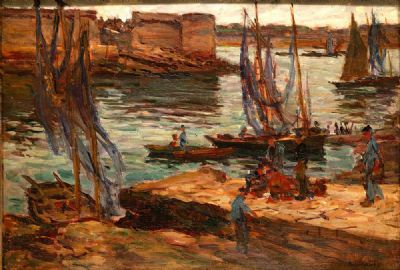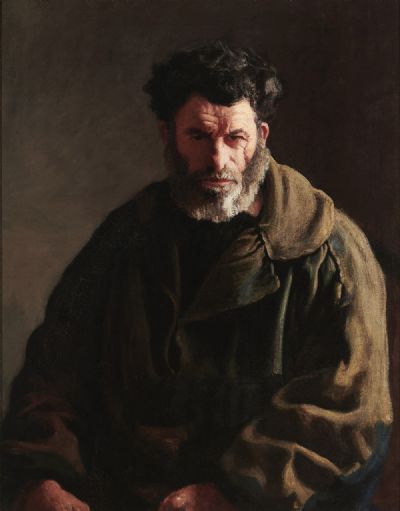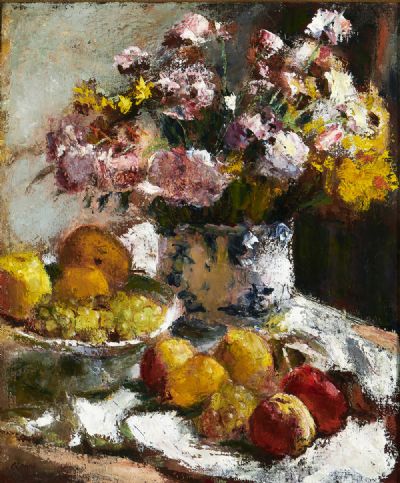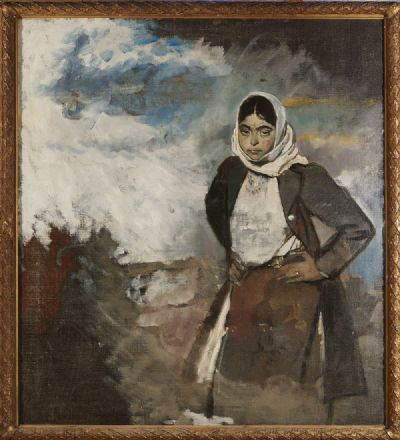Lot Closes In:
Sold Prior To Auction
FLOWERS, BOTTLE AND TWO JUGS (c.1891)
Lot 20
Current Bid:
€0.00
Bid History:
0 Bids
Estimate:
€120,000 - €180,000
Ending:
18:15:00 on 28/05/2024
Roderic O'Conor, 1860-1940
FLOWERS, BOTTLE AND TWO JUGS (c.1891)
Oil on canvas, 29" x 21 1/2" (73.5 x 55cm), signed; with atelier 'O'Conor' stamp verso
*Lot Withdrawn - This picture has been sold prior to auction to the National Gallery...
Read more
 Lot 20
Sold Prior To Auction
FLOWERS, BOTTLE AND TWO JUGS (c.1891)
Lot 20
Sold Prior To Auction
FLOWERS, BOTTLE AND TWO JUGS (c.1891)
 Lot 20
Sold Prior To Auction
FLOWERS, BOTTLE AND TWO JUGS (c.1891)
Lot 20
Sold Prior To Auction
FLOWERS, BOTTLE AND TWO JUGS (c.1891)
Estimate:
€120,000 - €180,000
Roderic O'Conor, 1860-1940
FLOWERS, BOTTLE AND TWO JUGS (c.1891)
Oil on canvas, 29" x 21 1/2" (73.5 x 55cm), signed; with atelier 'O'Conor' stamp verso
*Lot Withdrawn - This picture has been sold prior to auction to the National Gallery of Ireland, where it will form part of the Permanent Collection*
Literature: Roy Johnston, 'Gauguin's Irish Friend', in Art and Artists, September 1984, p. 28 (illustrated); Jonathan Benington, Roderic O'Conor, a Biography with a Catalogue of his Work, Dublin, 1992, pp. 51, 190 (catalogue no. 17), and reproduced plate 7; Browse & Darby, London, Roderic O'Conor 1860-1940, catalogue by Jonathan Benington, 1994, no.2; Christie's, Paris, La Collection Sam Josefowitz, De L'Ecole de Pont-Aven jusqu'a L'Art Moderne, 20-21 October 2023, no. 415, pages 166-169.
Exhibited: London, Roland, Browse & Delbanco, Roderic O'Conor, Norman Adams, April-May 1964, p. 3, no. 4 (illus. fig. 4).
London, Barbican Art Gallery; Belfast, The Ulster Museum; Dublin, National Gallery of Ireland; Manchester, Whitworth Art Gallery, Roderic O'Conor, September 1985-MAay 1986, p. 64, no. 7 (illus., p. 65); Sydney, Art Gallery of New South Wales, Gauguin and the Pont-Aven School, May-July 1994, p. 160 and 221, no. 96 (illus in colour, p. 162; title 'Still-life with a carafe'). Indianapolis, Indianapolis Museum of Art; Baltimore, The Walters Art Gallery; Montreal, The Montreal Museum of Fine Arts; Memphis, The Dixon Gallery and Gardens; San Diego, San Diego Museum of Art; Portland, Portland Art Museum; Boston, Museum of Fine Arts; Jerusalem, The Israel Museum, Gauguin and the School of Pont-Aven, September 1994-January 1997, p. 126, no. 96 (illus in colour, p. 127; title 'Still-life with a carafe').
Roderic O'Conor's most distinctive contribution to the development of modern art was his invention of a style of painting that relied on alternating bright colours applied in thick 'stripes'. He pioneered this method in 1892 and continued using it for two years. One third of his eighteen surviving 'striped' pictures are vested in major museums around the world, from Auckland and New York to Paris and Belfast, leaving no more than a dozen still in private hands. Amongst the latter one of the best known is Flowers, Bottle and two Jugs, which was in the prestigious collection of Samuel Josefowitz for many years. In this composition, perhaps for the first time, O'Conor interpreted his subject using an all-over web of expressive lines, laying down vertical streaks of bright green and pink, whilst slashes of purple and turquoise represent the shadows.
O'Conor had arrived in the Breton village of Pont-Aven in the late summer or autumn of 1891, marking his arrival with a powerful group of portraits of a middle-aged Breton fisherman (see lot 21), one of which featured the same cider bottle seen in the present work. Although the first chapter in the development of the Pont-Aven School of painting had just ended, O'Conor found his feet quickly. Gauguin, the School's progenitor, was temporarily absent on his first trip to the South Seas. Paul Serusier, one of the chief disciples, had decided to explore the quieter charms of Huelgoat and Châteauneuf-du-Faou, leaving only Emile Bernard to make a return visit to the village, but not until the summer of 1892. The field was thus wide open for a staunchly modernist artist such as O'Conor to initiate a distinctive style, one capable of ranking amongst the emerging strains of progressive painting that typified the contemporary Parisian art scene.
Since 1888 the trademark Pont-Aven style was Synthetism, which rejected conventional perspective in favour of broad flat forms, picked out in luminous colours and bold contours (similar in appearance to medieval stained glass). Although O'Conor experimented with elements of this style in his some of his drawings and etchings, he never embraced it wholeheartedly. While the free use of colour appealed to him, he could not subscribe to the extremely shallow focal plane and seemingly wilful distortions of Nature practiced by his Synthetist colleagues.
On one level, Flowers, bottle and two jugs is a declaration of his newfound affinity for this remote region of France. The still life objects he has included were all locally sourced: a bottle of strong farm cider, just opened, a glass of what appear to be wild roses, and two hand-painted faïence jugs from Quimper, decorated with flowers and foliage. It is as if the painter wanted to announce the fact that he had abandoned the conventions of bourgeois civilisation in favour of a more authentic, rustic simplicity, echoing the sentiments of Gauguin four years earlier when he expressed his delight at the sound of his wooden clogs ringing out on the granite rocks. In just a few months Brittany had permeated the fibre of O'Conor's being; it was no accident that the region became his base for the next thirteen years - a base that stimulated him to create his most innovative work.
On another level, Flowers, bottle and two jugs is a mature and confident statement of O'Conor's artistic radicalism. In this picture, with its carefully considered spatial, tonal and chromatic relationships, he quite literally nails his colours to the mast, aided by a strong shaft of sunlight streaming through a window just out of the picture to the left. The method O'Conor has used to apply his pigments is the most daring aspect of the painting, and one that must have triggered a potent visual shock when it was seen by his more conventional contemporaries. From top to bottom, the picture surface has been articulated using bold, rhythmic 'stripes' of pigment, most of them aligned vertically, with the exception of the diagonal striations used to paint the two jugs. The undisguised ribbons of paint disrupt our representational reading of the composition, making us focus instead on the warp and weft of the painter's brushstrokes and the harmonies of his colours. O'Conor's bold gestures carry a very modern message: that the painting is, first and foremost, a two-dimensional entity governed by the logic of its own making, rather than a mere replica of three-dimensional reality.
The flickering colour vibrations in Flowers, bottle and two jugs could be conceived as serving a similar purpose to the dots of pure colour used by the Pointillists. O'Conor's attenuated brushstrokes are, however, too prominent to allow individual colours to mix optically - his alternating strokes of pink and blue, for example, do not create purple. The method is more akin to that of a tapestry, in which strands of the same colour reappear in other parts of the design, knitting it together visually. Whilst the multi-disciplinary ethos that Gauguin propagated amongst his followers in Pont-Aven undoubtedly stimulated the revival of medieval art forms, one has to look elsewhere to find the catalyst for O'Conor's invention of the 'stripe'. The spur was provided by an encounter with the paintings of the recently deceased Vincent Van Gogh, which O'Conor was perceptive enough to appreciate at a time when the Dutchman was still years away from achieving any recognition. The Irishman would have seen Vincent's contributions to the Salon des Independants, where he also exhibited, but the moment of 'conversion' was most likely a visit to the memorial exhibition staged by the painter's art-dealing brother, Theo Van Gogh, in his Parisian apartment in September 1890. Another, more local catalyst would have been Emile Bernard, one of the Dutch artist's staunchest friends and the first person to publish a selection of his letters, which he had brought with him to Pont-Aven for editing in 1892.
Looking at O'Conor's canvases of that first season in the Breton village, it is clear that he was greatly inspired by the gyrating webs of parallel lines that coursed through the fields, trees and clouds in Van Gogh's St Remy landscapes. O'Conor would later describe these pictures as "wonderful expressions of character pushed to the point of hallucination." The discovery had a far-reaching effect on the young painter, enabling him to establish a new tack from that seen in the recently completed portraits of the local fisherman, whose naturalism now gave way to a distinctly personal response to Vincent's dynamically configured compositions. The tentatively hatched and feathered brushstrokes of Still Life with Bottles (Tate Britain) soon progressed into the bolder mark-making of Flowers, bottle and two jugs, in which the 'stripes' are totally undisguised, quite possibly for the first time. In the Pont-Aven of that era, indoor subjects were usually tackled during the winter season, when it was too cold to work outdoors, suggesting that O'Conor's striped still lifes pre-dated his landscapes deploying the same method.
The unique style that O'Conor developed through the spring and summer of 1892 would characterise his art up until the time of his meeting with Gauguin two years later. That it turned heads from the moment of its inception is clear from the fellow artists who quickly adopted the 'stripe' in their own work, whether on paper or canvas, namely Cuno Amiet, Armand Seguin and Robert Bevan. In their 1905 book Brittany, Dorothy and Mortimer Menpes even referred to a school of Stripists in Pont-Aven, who "painted in stripes, with vivid colour as nearly prismatic as possible".
Jonathan Benington, March 2024
FLOWERS, BOTTLE AND TWO JUGS (c.1891)
Oil on canvas, 29" x 21 1/2" (73.5 x 55cm), signed; with atelier 'O'Conor' stamp verso
*Lot Withdrawn - This picture has been sold prior to auction to the National Gallery of Ireland, where it will form part of the Permanent Collection*
Literature: Roy Johnston, 'Gauguin's Irish Friend', in Art and Artists, September 1984, p. 28 (illustrated); Jonathan Benington, Roderic O'Conor, a Biography with a Catalogue of his Work, Dublin, 1992, pp. 51, 190 (catalogue no. 17), and reproduced plate 7; Browse & Darby, London, Roderic O'Conor 1860-1940, catalogue by Jonathan Benington, 1994, no.2; Christie's, Paris, La Collection Sam Josefowitz, De L'Ecole de Pont-Aven jusqu'a L'Art Moderne, 20-21 October 2023, no. 415, pages 166-169.
Exhibited: London, Roland, Browse & Delbanco, Roderic O'Conor, Norman Adams, April-May 1964, p. 3, no. 4 (illus. fig. 4).
London, Barbican Art Gallery; Belfast, The Ulster Museum; Dublin, National Gallery of Ireland; Manchester, Whitworth Art Gallery, Roderic O'Conor, September 1985-MAay 1986, p. 64, no. 7 (illus., p. 65); Sydney, Art Gallery of New South Wales, Gauguin and the Pont-Aven School, May-July 1994, p. 160 and 221, no. 96 (illus in colour, p. 162; title 'Still-life with a carafe'). Indianapolis, Indianapolis Museum of Art; Baltimore, The Walters Art Gallery; Montreal, The Montreal Museum of Fine Arts; Memphis, The Dixon Gallery and Gardens; San Diego, San Diego Museum of Art; Portland, Portland Art Museum; Boston, Museum of Fine Arts; Jerusalem, The Israel Museum, Gauguin and the School of Pont-Aven, September 1994-January 1997, p. 126, no. 96 (illus in colour, p. 127; title 'Still-life with a carafe').
Roderic O'Conor's most distinctive contribution to the development of modern art was his invention of a style of painting that relied on alternating bright colours applied in thick 'stripes'. He pioneered this method in 1892 and continued using it for two years. One third of his eighteen surviving 'striped' pictures are vested in major museums around the world, from Auckland and New York to Paris and Belfast, leaving no more than a dozen still in private hands. Amongst the latter one of the best known is Flowers, Bottle and two Jugs, which was in the prestigious collection of Samuel Josefowitz for many years. In this composition, perhaps for the first time, O'Conor interpreted his subject using an all-over web of expressive lines, laying down vertical streaks of bright green and pink, whilst slashes of purple and turquoise represent the shadows.
O'Conor had arrived in the Breton village of Pont-Aven in the late summer or autumn of 1891, marking his arrival with a powerful group of portraits of a middle-aged Breton fisherman (see lot 21), one of which featured the same cider bottle seen in the present work. Although the first chapter in the development of the Pont-Aven School of painting had just ended, O'Conor found his feet quickly. Gauguin, the School's progenitor, was temporarily absent on his first trip to the South Seas. Paul Serusier, one of the chief disciples, had decided to explore the quieter charms of Huelgoat and Châteauneuf-du-Faou, leaving only Emile Bernard to make a return visit to the village, but not until the summer of 1892. The field was thus wide open for a staunchly modernist artist such as O'Conor to initiate a distinctive style, one capable of ranking amongst the emerging strains of progressive painting that typified the contemporary Parisian art scene.
Since 1888 the trademark Pont-Aven style was Synthetism, which rejected conventional perspective in favour of broad flat forms, picked out in luminous colours and bold contours (similar in appearance to medieval stained glass). Although O'Conor experimented with elements of this style in his some of his drawings and etchings, he never embraced it wholeheartedly. While the free use of colour appealed to him, he could not subscribe to the extremely shallow focal plane and seemingly wilful distortions of Nature practiced by his Synthetist colleagues.
On one level, Flowers, bottle and two jugs is a declaration of his newfound affinity for this remote region of France. The still life objects he has included were all locally sourced: a bottle of strong farm cider, just opened, a glass of what appear to be wild roses, and two hand-painted faïence jugs from Quimper, decorated with flowers and foliage. It is as if the painter wanted to announce the fact that he had abandoned the conventions of bourgeois civilisation in favour of a more authentic, rustic simplicity, echoing the sentiments of Gauguin four years earlier when he expressed his delight at the sound of his wooden clogs ringing out on the granite rocks. In just a few months Brittany had permeated the fibre of O'Conor's being; it was no accident that the region became his base for the next thirteen years - a base that stimulated him to create his most innovative work.
On another level, Flowers, bottle and two jugs is a mature and confident statement of O'Conor's artistic radicalism. In this picture, with its carefully considered spatial, tonal and chromatic relationships, he quite literally nails his colours to the mast, aided by a strong shaft of sunlight streaming through a window just out of the picture to the left. The method O'Conor has used to apply his pigments is the most daring aspect of the painting, and one that must have triggered a potent visual shock when it was seen by his more conventional contemporaries. From top to bottom, the picture surface has been articulated using bold, rhythmic 'stripes' of pigment, most of them aligned vertically, with the exception of the diagonal striations used to paint the two jugs. The undisguised ribbons of paint disrupt our representational reading of the composition, making us focus instead on the warp and weft of the painter's brushstrokes and the harmonies of his colours. O'Conor's bold gestures carry a very modern message: that the painting is, first and foremost, a two-dimensional entity governed by the logic of its own making, rather than a mere replica of three-dimensional reality.
The flickering colour vibrations in Flowers, bottle and two jugs could be conceived as serving a similar purpose to the dots of pure colour used by the Pointillists. O'Conor's attenuated brushstrokes are, however, too prominent to allow individual colours to mix optically - his alternating strokes of pink and blue, for example, do not create purple. The method is more akin to that of a tapestry, in which strands of the same colour reappear in other parts of the design, knitting it together visually. Whilst the multi-disciplinary ethos that Gauguin propagated amongst his followers in Pont-Aven undoubtedly stimulated the revival of medieval art forms, one has to look elsewhere to find the catalyst for O'Conor's invention of the 'stripe'. The spur was provided by an encounter with the paintings of the recently deceased Vincent Van Gogh, which O'Conor was perceptive enough to appreciate at a time when the Dutchman was still years away from achieving any recognition. The Irishman would have seen Vincent's contributions to the Salon des Independants, where he also exhibited, but the moment of 'conversion' was most likely a visit to the memorial exhibition staged by the painter's art-dealing brother, Theo Van Gogh, in his Parisian apartment in September 1890. Another, more local catalyst would have been Emile Bernard, one of the Dutch artist's staunchest friends and the first person to publish a selection of his letters, which he had brought with him to Pont-Aven for editing in 1892.
Looking at O'Conor's canvases of that first season in the Breton village, it is clear that he was greatly inspired by the gyrating webs of parallel lines that coursed through the fields, trees and clouds in Van Gogh's St Remy landscapes. O'Conor would later describe these pictures as "wonderful expressions of character pushed to the point of hallucination." The discovery had a far-reaching effect on the young painter, enabling him to establish a new tack from that seen in the recently completed portraits of the local fisherman, whose naturalism now gave way to a distinctly personal response to Vincent's dynamically configured compositions. The tentatively hatched and feathered brushstrokes of Still Life with Bottles (Tate Britain) soon progressed into the bolder mark-making of Flowers, bottle and two jugs, in which the 'stripes' are totally undisguised, quite possibly for the first time. In the Pont-Aven of that era, indoor subjects were usually tackled during the winter season, when it was too cold to work outdoors, suggesting that O'Conor's striped still lifes pre-dated his landscapes deploying the same method.
The unique style that O'Conor developed through the spring and summer of 1892 would characterise his art up until the time of his meeting with Gauguin two years later. That it turned heads from the moment of its inception is clear from the fellow artists who quickly adopted the 'stripe' in their own work, whether on paper or canvas, namely Cuno Amiet, Armand Seguin and Robert Bevan. In their 1905 book Brittany, Dorothy and Mortimer Menpes even referred to a school of Stripists in Pont-Aven, who "painted in stripes, with vivid colour as nearly prismatic as possible".
Jonathan Benington, March 2024
- Enquire
- How bidding works
Please note: You will require a deVeres account in order to bid. Please register via the website. Each lot will close numerically. If there is late bidding the time may be extended which could delay subsequent lots. The lots will start to close from 2.00pm on auction day, closing at 45 second intervals.
PLEASE BID EARLY TO AVOID DISAPPOINTMENT.
In order to allow rival bidders the opportunity to respond to a late bid the following extensions will apply:
IF A BID IS RECEIVED WITHIN THE FINAL 45 SECONDS OF THE COUNTDOWN THE CLOCK WILL RESET TO 60 SECONDS.
At any point you can leave a maximum bid, representing the highest price you are prepared to pay for a particular lot. Bidding only advances when there is competition from a rival bidder. In that case the system bids on your behalf, only up to the maximum if required. All bids are relayed to you be email, along with notification if you have been outbid.
All maximum bids are confidential and not disclosed. The system will endeavor to purchase the lot for you for the least price. Bids are subject to buyer’s premium of 25% (incl vat), with no additional charges.
In the event of a tied bid, the preference will be given to the bid submitted first. The second bidder will receive immediate notification of being outbid.
PLEASE BID EARLY TO AVOID DISAPPOINTMENT.
In order to allow rival bidders the opportunity to respond to a late bid the following extensions will apply:
IF A BID IS RECEIVED WITHIN THE FINAL 45 SECONDS OF THE COUNTDOWN THE CLOCK WILL RESET TO 60 SECONDS.
At any point you can leave a maximum bid, representing the highest price you are prepared to pay for a particular lot. Bidding only advances when there is competition from a rival bidder. In that case the system bids on your behalf, only up to the maximum if required. All bids are relayed to you be email, along with notification if you have been outbid.
All maximum bids are confidential and not disclosed. The system will endeavor to purchase the lot for you for the least price. Bids are subject to buyer’s premium of 25% (incl vat), with no additional charges.
In the event of a tied bid, the preference will be given to the bid submitted first. The second bidder will receive immediate notification of being outbid.
Sign-up to our auction alert
Signup for personalised Irish art recommendations, invitations to viewings and auctions, articles and more.

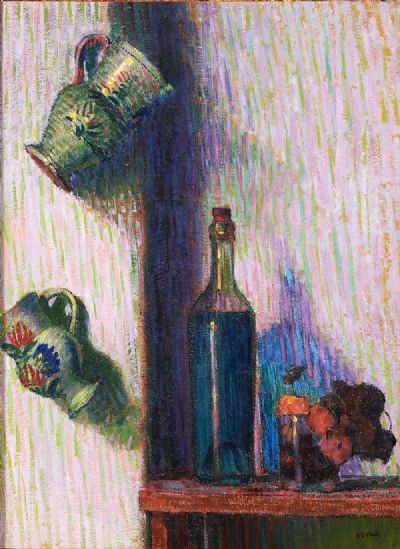







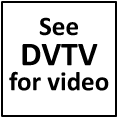 View More Videos
View More Videos DVTV Click Here To View Video
DVTV Click Here To View Video